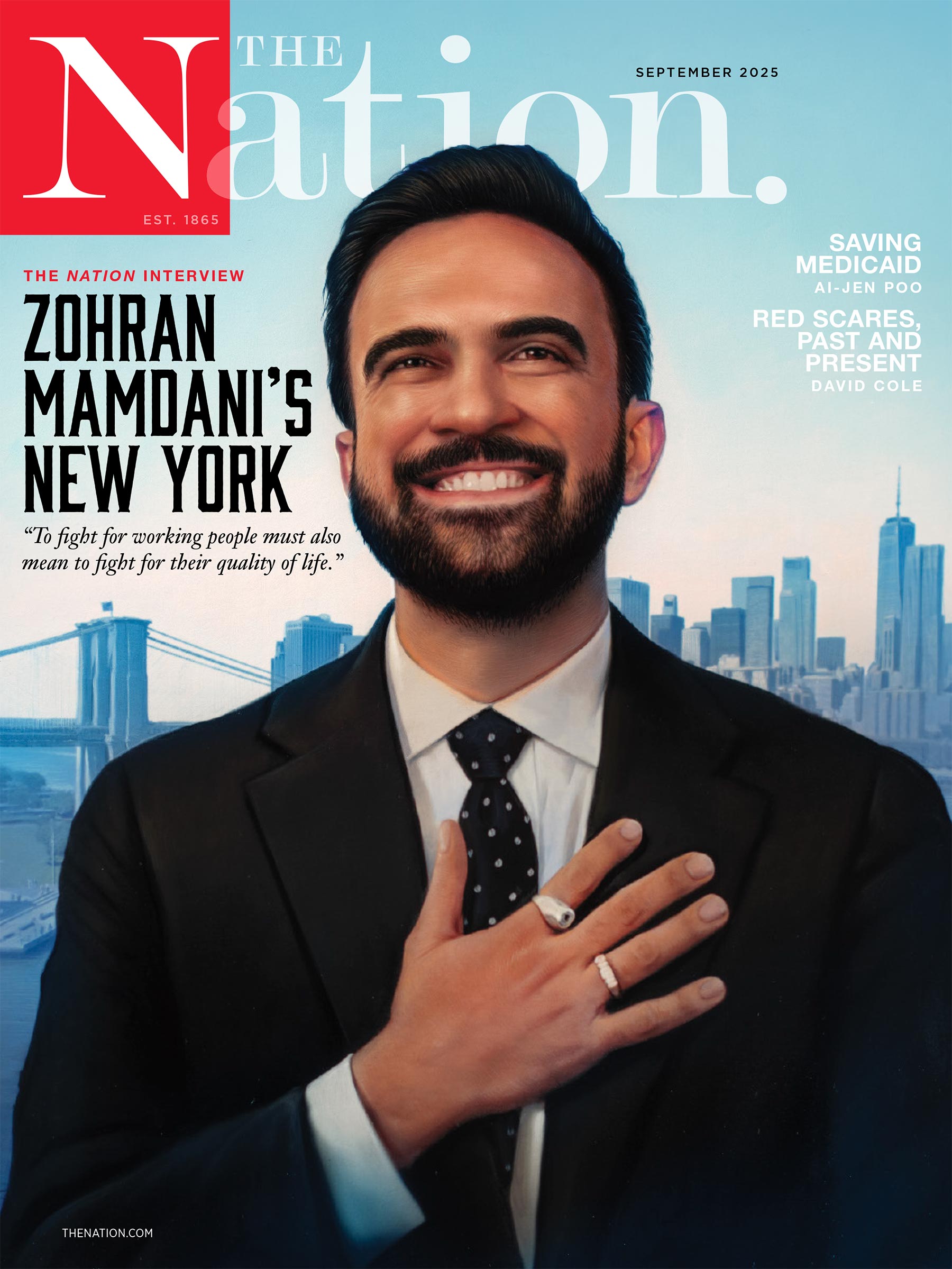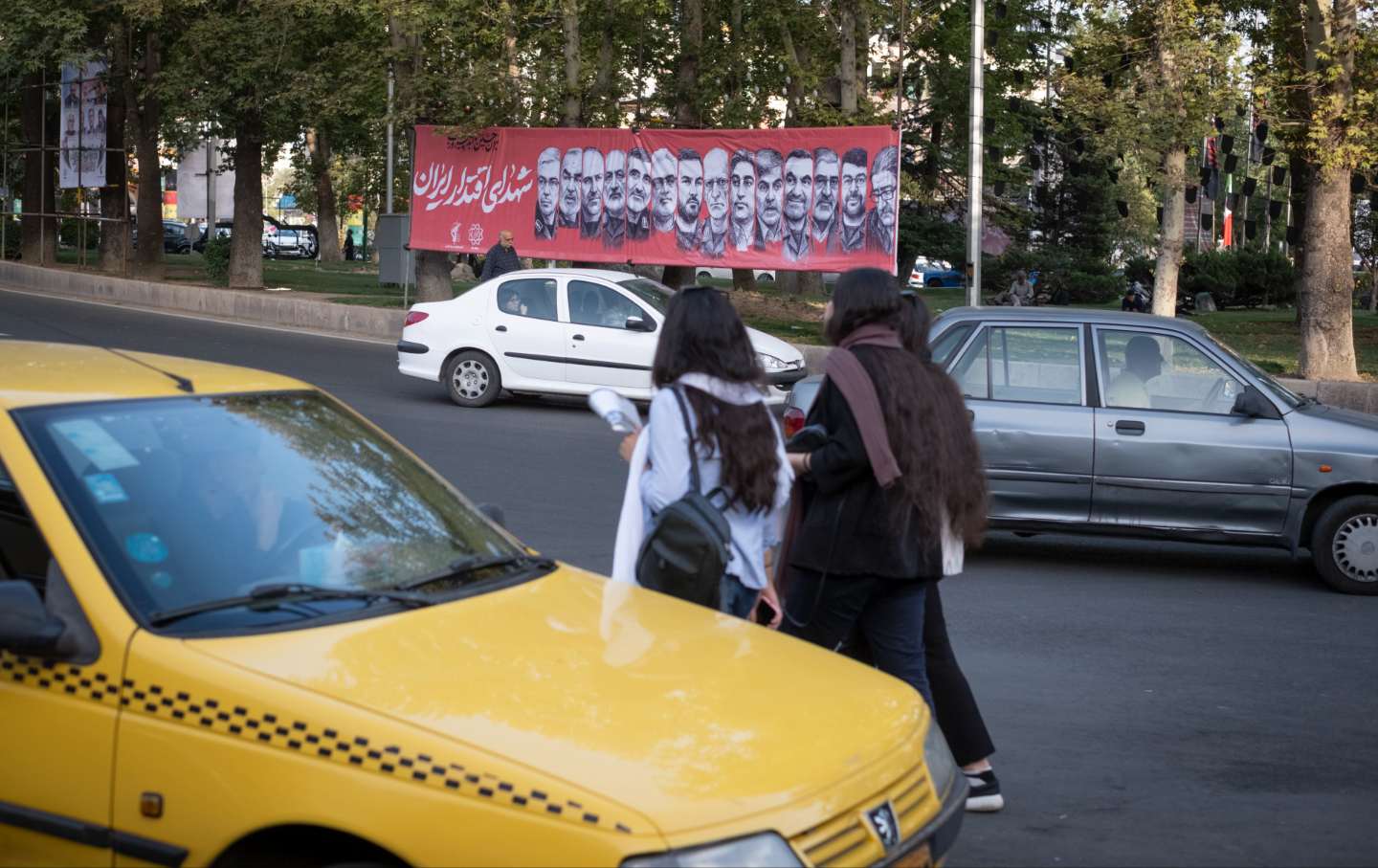
Young Iranian women walk past a banner featuring portraits of the IRGC generals and nuclear scientists who were killed in Israeli attacks, in northern Tehran, June 30, 2025.
(Morteza Nikoubazl / NurPhoto via Getty Images)On June 14, a day after Israel launched a series of airstrikes on Iran, Prime Minister Benjamin Netanyahu addressed the Iranian public. “As we achieve our objective, we are also clearing the path for you to achieve your freedom… This is your opportunity to stand up and let your voices be heard. Woman, Life, Freedom. Zan, Zindagi, Azadi,” he said.
The slogan Netanyahu invoked originated in the Kurdish women’s movement and spread widely in Iran after Jina (Mahsa) Amini died in state custody in 2022, following her arrest for allegedly violating the government’s veiling laws. Reports of her torture and death sparked a nationwide uprising, with people flooding the streets and posting on social media to protest the repression of women and minorities.
But many women who had participated in the Woman, Life, Freedom movement were angry and disgusted at Netanyahu’s remarks. “When he used Woman, Life, Freedom in his speech, I wanted to throw up,” said Melina Rozehkhan, now a political science student at Columbia University. “How are they going to free Iranian women? By bombing and killing them?” asked nutritionist Dr. Leila Dehghan.
While Israel claimed the war would liberate Iranian women, many of those women say it has instead set back the Woman, Life, Freedom movement. Israeli attacks killed hundreds, including women, and left widespread destruction and economic hardship, forcing many in the movement to focus on basic survival. At the same time, women’s ability to protest has been further restricted as the Islamic Republic intensifies its repression, targeting activists and social media users. Yet even as progress is rolled back, new networks have emerged or been revived since the war’s outbreak, with a growing emphasis on anti-imperialism.
Though it gained global attention in 2022, the roots of Woman, Life, Freedom go much further back, reaching into the everyday experiences of Iranian women that gave the movement its urgency.
Artist and filmmaker Tara Aghdashloo recalled growing up in a progressive household but still witnessing unequal treatment between men and women. Her brother had more freedom, while she faced stricter rules, including an earlier curfew. Years before the Woman, Life, Freedom movement gained momentum, Aghdashloo found herself campaigning against wearing hijab at her all-girls school. She would argue with her headmistress, pressing her to explain why students needed to cover their hair when no men were present in the building. Eventually, Aghdashloo’s campaign was successful. “That was my first taste of justice,” she said. “And so Woman, Life, Freedom immediately pulled me in.”
E., who was born and raised in Iran and later joined Iranians For Collective Liberation and co-founded the music empowerment group We Are Womxn Rising, remembers being 5 years old when Iran’s morality police began stalking and harassing her. Because she was tall for her age, the officers refused to believe she was so young and insisted she should already be wearing a hijab, which becomes compulsory in Iran at age 9. They attempted to drag her away to detention before her mother intervened, pulling her daughter to safety.
These brushes with state control help explain why the movement resonated across Iranian society. E. described how Iranians joined Woman, Life, Freedom, regardless of political differences, “not because it was a trend or a choice, but a necessity.”
Given the movement’s organic growth from such personal experiences, attempts at foreign co-optation felt all the more jarring to these women.
For Aghdashloo, outsiders who position themselves as spokespeople for “helpless Iranian women” come across as deeply patronizing. Similarly, E. argued that the attacks by Israel and the US directly contradict the essence of Woman, Life, Freedom. “You cannot package Woman, Life, Freedom from the perspective of a nation-state or patriarchal power or geopolitical games because Woman, Life, Freedom resists all of that; its very core is about humanity and liberation for all,” she said.
Filmmaker Afsaneh Salari sees the war as not just a contradiction, but a disruption. In the months before the strikes, she said she had noticed a shift: More girls in Tehran and other cities were choosing not to wear the hijab in public, something that once felt mandatory even without the presence of police, due to deep social conditioning. “The taboo was gone. But then the war happened.” For Salari, the war has reversed those hard-won civil gains.
That reversal is now playing out across the country, as the Islamic Republic escalates its crackdown on social media users, activists, and minorities. Over 700 people have been arrested, and six executed on espionage charges. Detainees are facing rushed trials in kangaroo courts, often without legal representation or due process. The regime is also pushing vague new criminal laws that could allow the death penalty for civic activity or even social media, according to Saeid Dehghan, a human rights lawyer and director of the Parsi Law Collective. This climate of fear has left the Woman, Life, Freedom movement vulnerable, as organizing becomes harder and the capacity for dissent continues to shrink. “But we knew this would happen; wars always undermine movements,” said Sahar Delijani, author of Children of the Jacaranda Tree.
Popular
“swipe left below to view more authors”Swipe →The Israeli attack on Evin Prison, which killed 71 people, illustrates this dynamic. “Even before the strike, the Iranian state had planned to transfer women political prisoners to weaken their collective resistance and tighten surveillance, according to an organizer who asked to remain anonymous for fear of reprisal. The bombing gave authorities a pretext to relocate all women detainees to Qarchak Prison, a facility on the outskirts of Tehran without adequate ventilation, lighting, clean water, healthcare, or sleeping space,” said Nasim Mogharab and Mina Fakhravar, co-founders of the group FARA4Freedom – Feminist Voices Against War and Patriarchy.
For E., the attack on Evin Prison also made the intention of Iran’s attackers clearer. The prison holds students, writers, activists, and dissidents, not military targets. To E., striking Evin wasn’t about supporting democracy or challenging the regime. “They did it because the true leaders of the Iranian liberation movement are in Evin,” she said, adding that it was a deliberate attempt to silence the very people who might oppose the return of figures like Reza Pahlavi, the exiled son of Iran’s last shah, who also has a close relationship with Israeli officials.
Iranians come by their wariness of foreign promises honestly. After World War II, Britain maintained control over Iran’s oil resources through the Anglo-Iranian Oil Company. In 1951, Iran’s democratically elected Prime Minister Mohammad Mosaddegh moved to nationalize the oil industry, threatening British economic interests. In response, the United States Central Intelligence Agency supported the United Kingdom in engineering a coup and backing once-deposed monarch Mohammad Reza Pahlavi back into power as shah. In 1979, Pahlavi was overthrown by Ruhollah Khomeini.
Even before the prison was bombed, Reyhaneh Ansari, Sakineh Parvaneh, Verisheh Moradi, and Golrokh Iraee, four women who had been imprisoned because of their activism, smuggled out a statement condemning the Israeli strikes. “Our liberation…is only possible through mass struggle…not by placing our hopes in foreign powers,” they wrote. “These powers–driven by exploitation, colonialism, war mongering, and mass killing have always brought devastation to this region.”
Their warning resonates as the full scale of the war’s death toll comes into focus, with Israeli strikes killing 935 people and injuring more than 5,000. “It’s hard to think about anything beyond survival when you have missiles dropping from the sky,” said Aghdashloo. Salari spoke of the emotional toll on Iranians as they process the destruction of homes and the names of the dead. “We don’t even trust the ceasefire because of how Israel has repeatedly violated ceasefires in Gaza and Lebanon,” she added. With so many of the people who sustained and embodied Woman, Life, Freedom now killed or grieving those killed, the space for collective action has narrowed. “People have been in survival mode, but for any type of cohesive movement, you need space to think, assess, and converse,” Aghdashloo said.
The economic dimensions of conflict have created additional obstacles for grassroots movements like Woman, Life, Freedom. Nikoo Nooryani, an Iranian-American activist based in LA, pointed to how the war accelerated inflation and unemployment that were already rampant thanks to international sanctions. “When you’re hungry and can’t feed your family, revolution isn’t the first thing on your mind,” she said. Nooryani believes that Western countries need to lift sanctions and stop conducting business with the Iranian government; this approach would provide Iranians with both the economic freedom and global access necessary to pursue democratic change on their own terms.
Meanwhile, Western countries claiming to act in the name of freedom, particularly for women, have instead left devastation in their wake. “How can you have experienced Iraq and Afghanistan and not learn from them?” Rozehkhan asked.
The recent conflict has also exposed divisions within the Iranian opposition. According to Delijani, two vocal minorities supported the bombing. One group hoped that removing the current regime might create space for the shah’s family to return to power. Another consisted of voices exhausted by decades of living under the Islamic Republic.
But many reject what they see as a false binary between support for the regime and support for foreign intervention. “Being anti-regime doesn’t mean being pro-imperialist,” said Daliah Lina, an Iranian Palestinian researcher and gender-based violence expert.
Delijani observed that people seek quick answers when discussing Iran, but argued that “there are no quick answers for anything anywhere.” She described the tendency to reduce complex political situations to simple choices as “denying people their complexity,” which amounts to “denying them their agency.”
Still, in the face of foreign cooptation, the loss of lives, economic hardship, and intensified repression, Mogharab and Fakhravar said the achievements of Woman, Life, Freedom remain so deeply rooted that even war cannot erase them. They believe that the movement is entering a new phase, sharpening its critique of all forms of domination: authoritarian, colonial, nationalist, and imperialist. “Anti-war discourses have become more prominent…and a renewed focus is emerging on building transnational alliances grounded in feminist ethics of care, solidarity, and political clarity,” they said.
Even amid war, Aghdashloo witnessed how political differences dissolved as Iranians cared for each other. People offered free accommodation to those fleeing bomb-struck cities and handed out free tea and water in long gas station lines for rationed fuel. Shopkeepers sold products without making a profit. Communities built communication networks to help families abroad check on loved ones during internet blackouts. “Such love and solidarity were reassuring and beautiful for us as a country, despite everything,” Aghdashloo said.
E. finds this resilience particularly moving. “Iranians have endured, and endured while singing, dancing, loving, protesting, and dreaming of a world where we are liberated. Even if it was forbidden, even if it was criminalized, even if they were killed for it, even if they buried their loved ones. No imperialist power or authoritarian government can take that away.”
It’s this resilience and love that sustains movements like Woman, Life, Freedom. “It lives in the courage of Iranian women, in their daily actions and pushback against the government’s restrictions,” said Shiva Nazarahari, cofounder of Zaagaah, which focuses on reproductive rights and justice.
It also carries across generations. Just as her parents once brought her to protests, Lina now brings her 3-year-old son, who already knows the slogans by heart. At home, they talk about justice, indigenous struggles, and standing up to oppression. Despite his age, she already sees what she’s trying to cultivate within him: to be kind, critical, and never complicit.
Take a stand against Trump and support The Nation!
In this moment of crisis, we need a unified, progressive opposition to Donald Trump.
We’re starting to see one take shape in the streets and at ballot boxes across the country: from New York City mayoral candidate Zohran Mamdani’s campaign focused on affordability, to communities protecting their neighbors from ICE, to the senators opposing arms shipments to Israel.
The Democratic Party has an urgent choice to make: Will it embrace a politics that is principled and popular, or will it continue to insist on losing elections with the out-of-touch elites and consultants that got us here?
At The Nation, we know which side we’re on. Every day, we make the case for a more democratic and equal world by championing progressive leaders, lifting up movements fighting for justice, and exposing the oligarchs and corporations profiting at the expense of us all. Our independent journalism informs and empowers progressives across the country and helps bring this politics to new readers ready to join the fight.
We need your help to continue this work. Will you donate to support The Nation’s independent journalism? Every contribution goes to our award-winning reporting, analysis, and commentary.
Thank you for helping us take on Trump and build the just society we know is possible.
Sincerely,
Bhaskar Sunkara
President, The Nation
More from The Nation
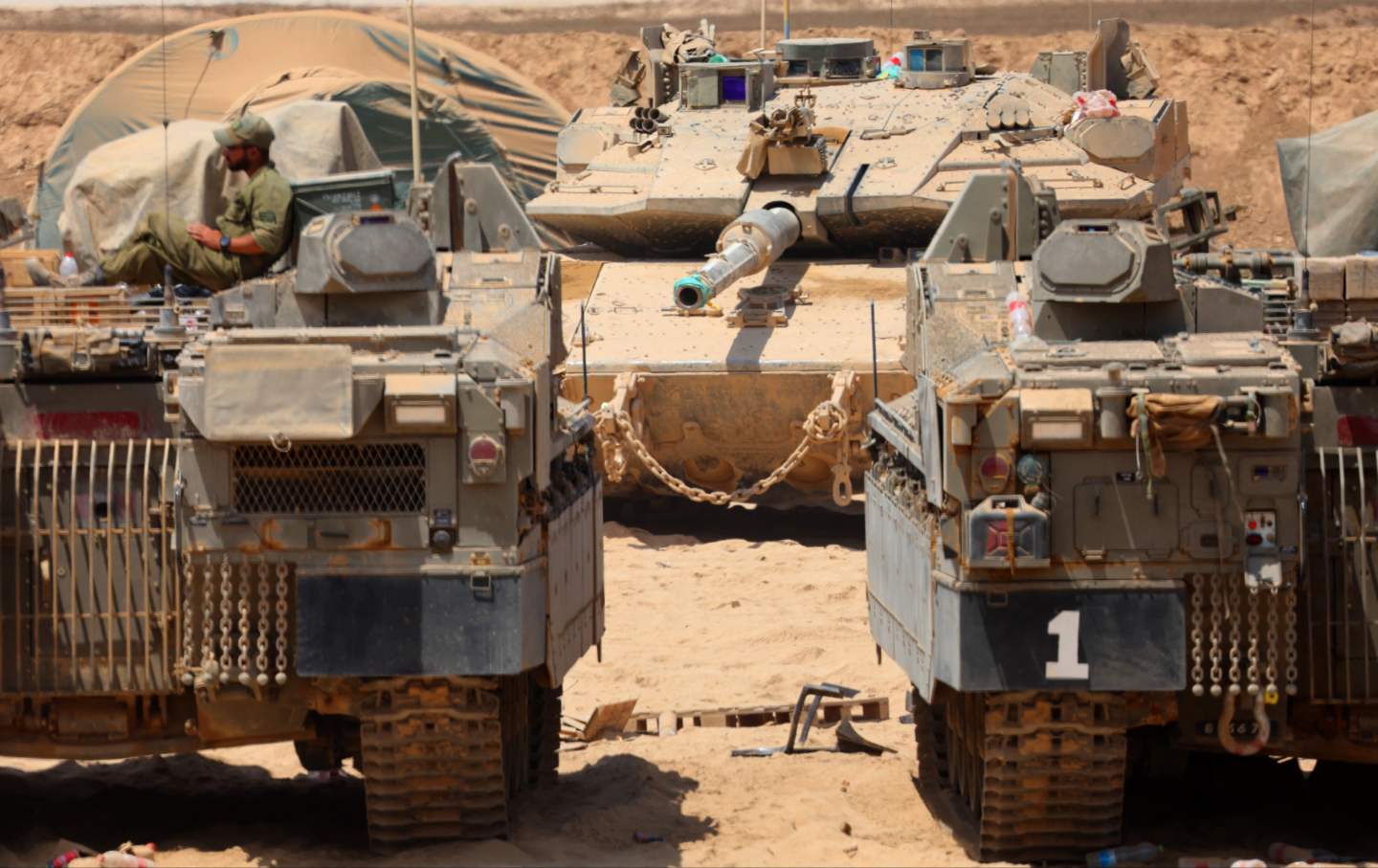
Israeli Soldiers Abused Me Before. I’m Terrified That They’ll Do It Again. Israeli Soldiers Abused Me Before. I’m Terrified That They’ll Do It Again.
Israel is invading Gaza City again. The trauma of what they did to me and my family during their last invasion haunts me every single day.
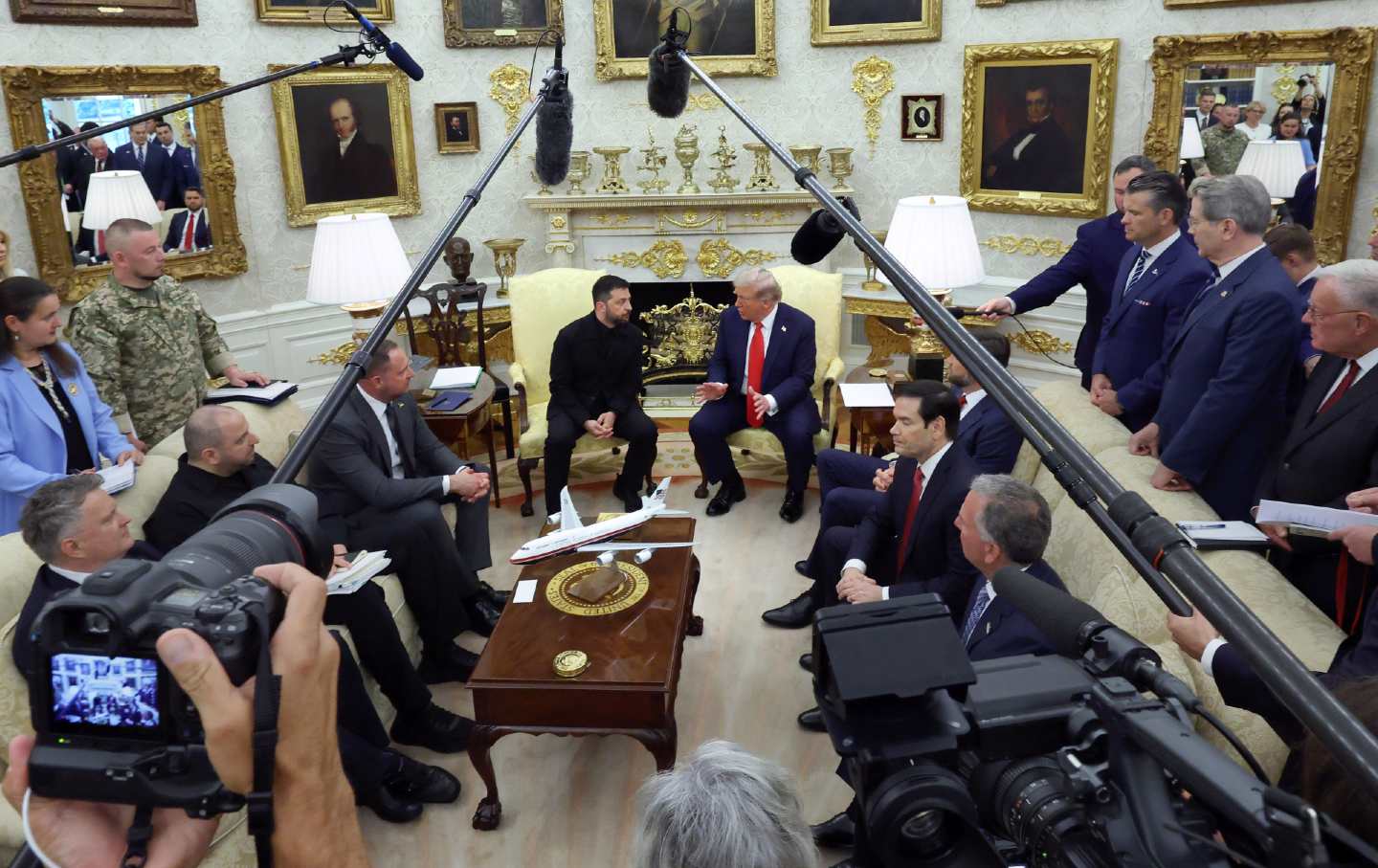
The Ukraine Peace Process Is Moving Quite Fast The Ukraine Peace Process Is Moving Quite Fast
Here are the openings—and obstacles.

Dismantling USAID Wasn’t Just Cruel—It Was Stupid Dismantling USAID Wasn’t Just Cruel—It Was Stupid
In an interconnected world, those who are alone, to use a favorite word of the president’s, are losers.

Trump Won’t Deliver Peace to Ukraine—or Anywhere Else Trump Won’t Deliver Peace to Ukraine—or Anywhere Else
No one can trust the United States when a fickle man-child controls its foreign policy.
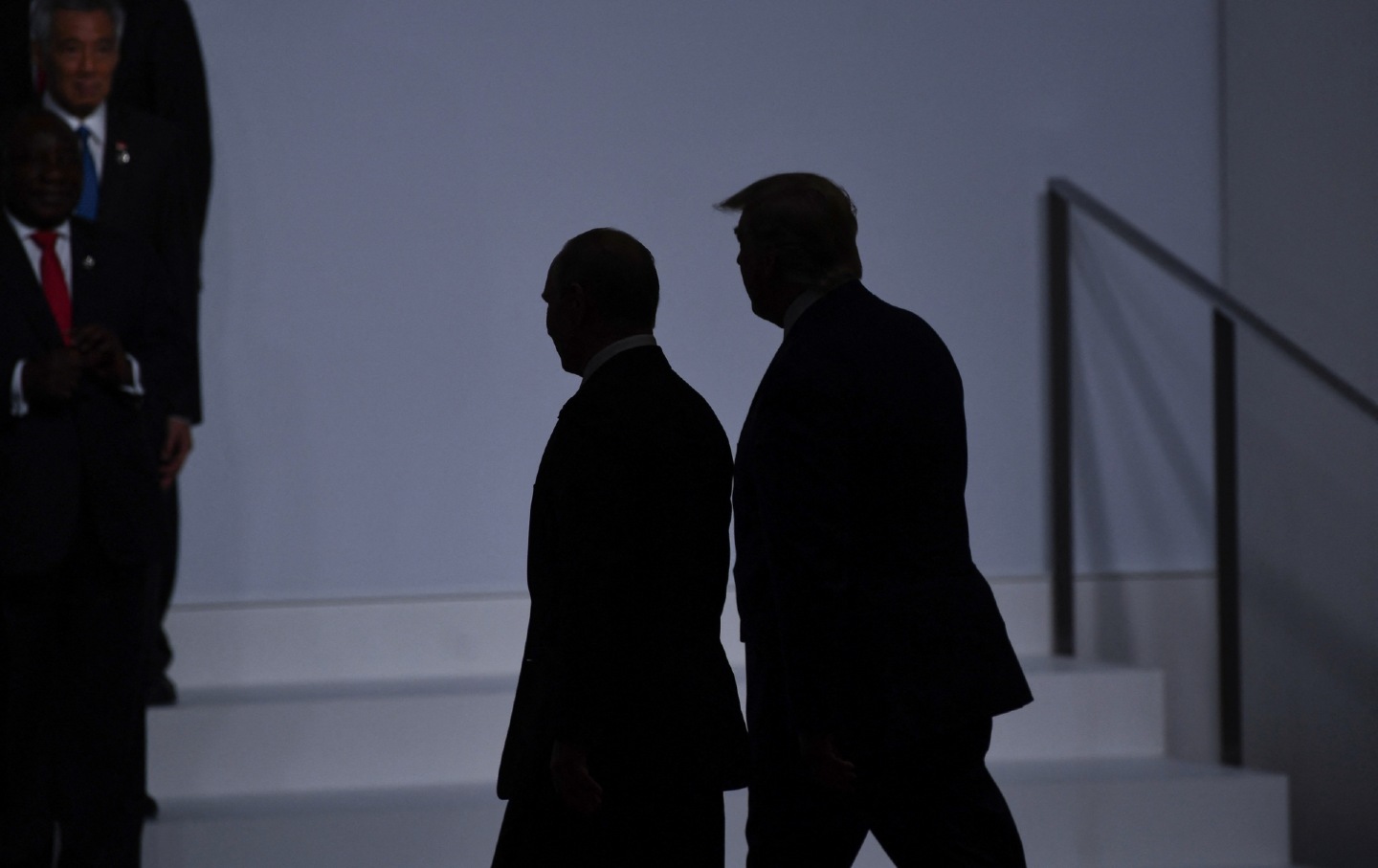
Presidents Trump and Putin Must Seize the Moment in Alaska Presidents Trump and Putin Must Seize the Moment in Alaska
The war in Ukraine is a regional security and humanitarian tragedy, but regarding nuclear weapons, Washington and Moscow stand to benefit from working together.
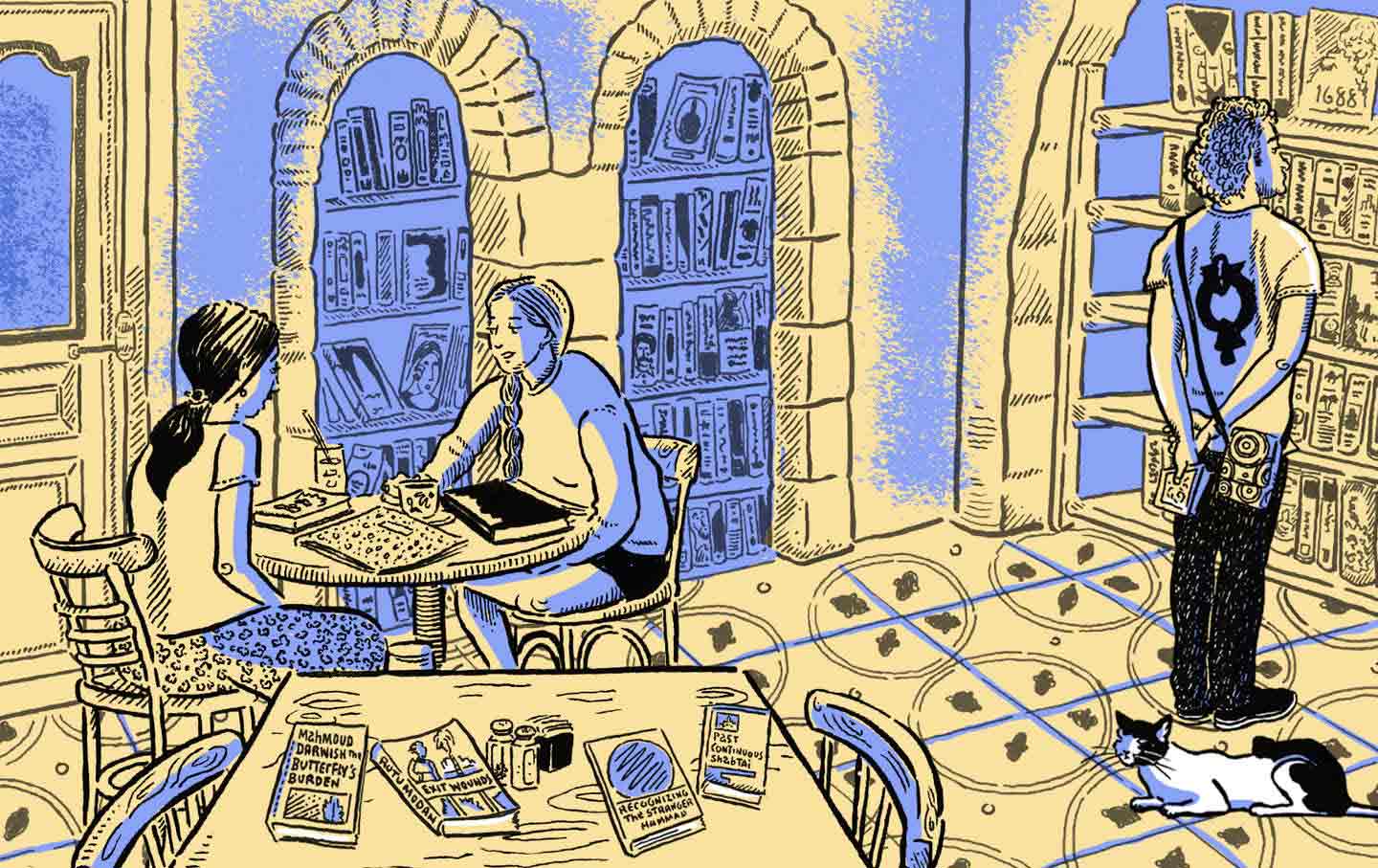
The Bookstores Bridging Divides in Israel The Bookstores Bridging Divides in Israel
People of goodwill on either side of the horror find unity in the search for a good read.
